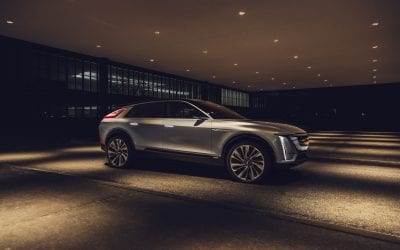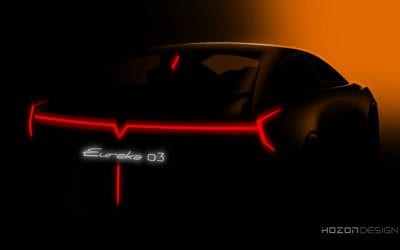Mercedes-Benz EQ electric vehicles were unveiled at the Paris International Auto Show, late 2016. The EQ brand stands for “Electric Intelligence” and includes all aspects of electric mobility, not just cars. Products and services include charging services, home energy services, and wall boxes. From a skeptics perspective, a separate electric vehicle brand could be ring-fencing by a company which is still not entirely sure about the future of electric vehicles. Dieter Zetsche, Chairman of the parent company, Daimler, stated that the new brand will consist of all Mercedes-Benz “electrification efforts”, with a goal of having it represent between 15% and 25% of global sales for the company by 2025, dependent on “the continued development of infrastructure and customer preferences.”
Along with the unveiling of the brand the company also introduced a close to production SUV which is expected to be commercially available by the end of the decade. Like Tesla, Mercedes-Benz also provides charging infrastructure whereby owners can recharge at public charging stations through its “Charge&Pay” mobile app.
Daimler, the parent company of Mercedes-Benz, committed $11 billion to research and development of electric vehicles. Around $1 billion will be invested in the company’s lithium-ion battery subsidiary, Deutsche AACCUmotive with its manufacturing facility at Kamenz in Germany. The investment in Deutsche AACCUmotive will ensure that production targets will be met. The new generation of electric vehicles will be based on an architecture developed specifically for battery-electric models, which is scalable in every respect and usable across all models. The EQ brand’s vehicles will feature wireless charging.
To ensure it’s presence in the electric vehicle market, Daimler led an investment round of $82 million in ChargePoint during March 2017. ChargePoint is the largest charging network operator in the USA. The investment round will be focused on a European charging network. Other investors of previous rounds which include BMW i Ventures also showed support in the current round.
The marketing efforts for the 2019 launch of the Mercedes EQC notched up a gear this week with the release of “Spy” images. Mercedes announced that winter testing for the EQC would start in January 2019 in Sweden followed by high-temperature testing in Southern Europe in the summer. The company also released videos of testing of the EQC in the Black Forest, Germany.
Mercedes Benz presented three different alternative powered vehicles at its stand at the Frankfurt Auto Show, the Mercedes AMG Project One PHEV, the GLC F Cell, a fuel cell vehicle, and the EQA EV pure electric vehicle.
Mercedes-Benz announced the creation of its new EV specific brand, EQ, at the Frankfurt Auto Show in September 2016. This week the luxury carmaker showed us more of its Vision EQ by unveiling the Smart Vision EQ ForTwo in the week running up to the Frankfurt Auto Show. According to the company, the Smart EQ provides a new vision of urban mobility where individualization options make the shared vehicle feel like “your” vehicle. The Smart EQ is the first vehicle from the Daimler Group to take the logical step of dispensing with a steering wheel and pedals. The Smart EQ is developed according to the German automaker’s CASE strategy which stands for the strategic pillars of connectivity (Connected), autonomous driving (Autonomous), flexible use (Shared & Services) and electric drive systems (Electric). EQ plans to introduce more than ten new electric cars by 2022, from the Smart up to a large SUV.
The Smart EQ has a battery capacity of 30kWh, nearly double that of the 2017 Smart ForTwo ED. The vehicle functions are controlled via personal mobile device or voice input, an arrangement that is intuitive, convenient and hygienic. Dispensing with conventional control elements makes the white interior appear even more spacious. The dashboard is replaced by a 24-inch (58.5 x 15.6 cm) screen which is surrounded by a rose gold-colored frame.
Daimler will also unveil the Mercedes Concept EQA teased above at the Frankfurt Auto Show.
Mercedes Benz and Chery Automotive reached an agreement in the trademark dispute lodged (EV News Week 12) by Chery in March 2017. According to a joint press release, the companies agreed to the following settlement with regards to using the EQ designation for electric vehicles in China:
Chery will focus on using the designations eQ and eQ1, as well as further numerical continuations thereof, while Daimler will focus on use in their electric Mercedes-Benz products with the designations EQC and any other alphabetical supplements. Daimler will use the EQ Power designation for Plug-In Hybrids and meanwhile Chery will also use eQ TEC to nominate their car electrification system.
Chery has already been using the eQ and eQ1 brand names in China since year 2014 and Daimler has now also granted them the possibility to use this name family in countries outside of China. Daimler established the EQ brand family for electrically driven Mercedes-Benz vehicles almost simultaneously in countries outside of China and Chery has granted the company the possibility to also use this in China now.
Daimler this week, after a board meeting in Berlin, announced that it would accelerate its $11 billion investment in electric vehicles by bringing it forward with three years from 2025, as announced last year to 2022. Reuters reported that the automaker’s aggressive stance are the result of it not being able to cut fleet emissions of 123gm CO2/km from 2015 to 2016 in Europe. Europe has set a very stringent target of 95gm CO2/km by 2020. Daimler’s own target for 2020 is 100gm CO2. The German automaker cites the popularity of SUV’s as the reason for it not cutting its emissions for the first time since 2007.
Reuters reported that Daimler plans to invest $11Bln in electric vehicle research and development. Daimler’s Research & Development Head, Thomas Weber was quoted in telling the German publication, Stuttgarter Zeitung that “By 2025 we want to develop ten electric cars based on the same architecture,”. The automaker targets increasing cruising ranges above 700km (430 miles).
Mercedes finally publically unveiled its new all-electric car brand, the EQ (Electric Intelligence). The brand will develop a host of EV related services and products, not just cars, such as charging stations and battery packs. The first vehicle to come from the brand is targeted at the highly popular SUV segment, a clever move to differentiate the brand in this hotly contested sector. The Generation EQ SUV with a battery capacity of 70kWh providing a range of over 250miles powering two electric motors providing 300kW of power. The production version is expected to be launched in 2018.
Mercedes registered its EQ model series as it paves the ay for its MEQ sub-brand of electric vehicles. The EQ model series would be the company’s answer to the BMW i Series. The registration included the whole alphabet, from EQA to EQX slogans including ‘EQ inside’, ‘EQ boost’ and ‘Generation MEQ’.

Mercedes EQ Electric Vehicles
Mercedes EQ Electric Car Strategy in the news
Week 19 2018 EQC marketing efforts ups a gear

Week 37 2017 EQ at the Frankfurt Auto Show

Week 35 2017 Daimler unveils self-driving SmartEQ ForTwo

Week 29 2017 Daimler and Chery resolve trademark dispute
Week 13 2017 Daimler accelerates EV strategy
Week 48 2016 Daimler to invest $11Bln in EVs
Week 39 2016 EQ Brand unveiled
Week 32 2016 MB registers EQ Brand
Top 5 EV News Week 32 2020
Top 5 EV News Week 32 2020 | Cadillac Lyriq unveiled. Yet another Chinese EV startup IPO. Three new EV models launched this week.
Top 5 EV News Week 31 2020
Top 5 EV News Week 31 2020 | Successful IPO for CHJ Auto, Kandi finally enters the USA, Mitsubishi pays the cost for failing EV strategy.
Top 5 EV News Week 30 2020
Top 5 EV News Week 30 2020 | Chengdu Auto Show, Hozon Neta IPO, VW invest in China, eVito Tourer for sale


















